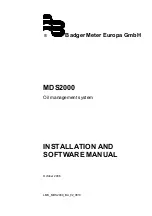
LOAb = ABSOLUTE MINIMUM ALARM
:
The alarm is activated when the
process value goes under the alarm set programmed on "ALn" parameter.
HIAb = ABSOLUTE MAXIMUM ALARM: The alarm is activated when the
process value goes upper than the alarm set programmed on "ALn"
parameter.
LHAb = ABSOLUTE WINDOW ALARM: The alarm is activated when the
process value goes under the alarm set programmed on "ALnL" parameter
or goes upper than the alarm set programmed on "ALnH" parameter.
LOdE = RELATIVE MINIMUM ALARM: The alarm is activated when the
process value goes under the value [SEtP - ALn ].
HIdE = RELATIVE MAXIMUM ALARM: The alarm is activated when the
process value goes upper than the value [SEtP + ALn ].
LHdE = RELATIVE WINDOW ALARM
:
The alarm is activated when the
process value goes under the value [SEtP - ALnL ] or goes upper than the
value [SEtP + ALnH ].
ALARMS HYSTERESIS:
The alarms functioning depends furthermore on
the alarms hysteresis ("HALn" parameter), which works in asymmetric
mode. More precisely, in case of minimum alarm, the alarm will be
activated when the process value goes under the alarm set and will be
deactivated when it goes upper than the alarm set + "HALn"; in case of
maximum alarm, the alarm will be activated when the process value goes
upper than the alarm set and will be deactivated when it goes under the
alarm set - "HALn". In case of window alarms, the minimum alarm
example is applicable to the lowest set ("ALnL") while the maximum alarm
example is applicable to the higher set ("ALnH").
"ALnc" - ALARM CONFIGURATION
:
The parameter can assume the
following values :
--C/--o/-SC/-So/L-C/L-o/LSC/LSo
precisely, any of the three types (a b c) has the following meanings :
c - OUTPUT LOGIC MODE
:
It's possible to have 2 different alarm output
behaviours, depending on the value of the first figure from the right.
C = OUTPUT ON IN ALARM CONDITIONS
:
The output is activated when
the alarm is active, while is deactivated while the alarm is not active.
o = OUTPUT OFF IN ALARM CONDITIONS: The output is activated
when the alarm is not active, while is deactivated while the alarm is active.
b- START-UP BEHAVIOUR
:
It's possible to have 2 different alarm output
behaviours, depending on the value of the second figure from the right.
- = NORMAL BEHAVIOUR: The alarm is always activated when there are
alarm conditions.
S = ALARM NOT ACTIVE AT START-UP: If at start-up the instrument is
in alarm conditions this is not activated. The alarm will be activated only
when the process value, after start-up, reaches the not-alarm conditions
and successively the alarm conditions.
a - ALARM LATCH
:
It's possible to have 2 different alarm output
behaviours, depending on the value of the third figure from he right.
- = ALARM NOT LATCHED: The alarm remains active only in alarm
conditions.
L = ALARM LATCHED: The alarm is activated when there are alarm
conditions and remains active although these conditions are not existing
anymore, till is not pushed the "LEFT" key.
4.12 - HEATER BREAK ALARM FUNCTION (HB)
The Heater Break alarm function (Alarm in case of broken heating element
) is available only when the instrument is equipped with A3/HB output and
it has been defined the functioning of it to be used as Heater Break function
(par. "FAL3" = HB). Furthermore, it's usable only when C1 output is
digital type (or Relay or SSR). If A3/HB is present the instrument will have
an input (TAHB) able to measure the load current driven by C1 output.
This kind of input accepts signals coming from current transformers (TA)
till a maximum of 200 mA (at 200 mA the instrument measure a value of
100.0).Therefore, to obtain the correct Ampere measure it will occur that
TA ratio would be 1/0,002. Tecnologic can supply 2 standard models :
TECNOLOGIC - THP 84
USER MANUAL (I - GB) - Vr. 02 - ISTR 00132 - PAG. 16






































